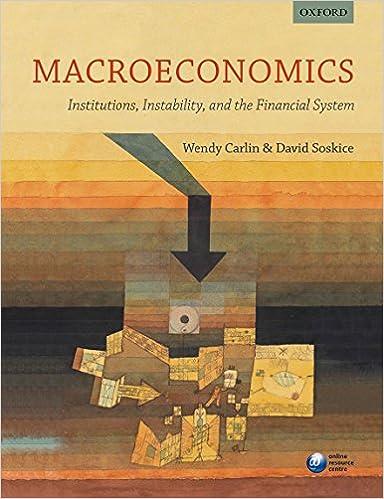We start this question with a simple version of the aggregate demand function, where, to keep the
Question:
We start this question with a simple version of the aggregate demand function, where, to keep the maths simple, we omit taxation and government spending:
\[ \begin{equation*} y^{D}=c_{0}+c_{1} y+\bar{l} \tag{1.14} \end{equation*} \]
Now, assume that \(c_{0}=200\) and \(\bar{I}=200\). In addition, assume that \(c_{1}=0.8\), such that:
\[ \begin{equation*} y^{D}=200+0.8 y+200 \tag{1.15} \end{equation*} \]
(a) What is the level of output in goods market equilibrium?
(b) Assume there is a fall in the marginal propensity to consume, \(c_{1}\), to 0.6 -i.e. there is a rise in the savings rate, as \(s_{1}+c_{1}=1\). If we assume that the rise in planned savings leads to the accumulation of unplanned inventories of goods and does not increase planned investment (ī), then what is the level of output that satisfies the new goods market equilibrium?
(c) Compare the level of savings in the new and old goods market equilibria. Note that in goods market equilibrium; \(S=s_{1} y-c_{0}\) and \(I=\bar{I}\).
(d) Comment on your findings in
(c) in response to the question of whether it is advisable for the policy maker to encourage households to increase their savings to help escape a recession. Describe in words a mechanism, which is not included in this model, that could provide a connection from a policy encouraging households to save more and exit from a recession.
Step by Step Answer:

Macroeconomics Institutions Instability And The Financial System
ISBN: 9780199655793
1st Edition
Authors: Wendy Carlin, David Soskice





